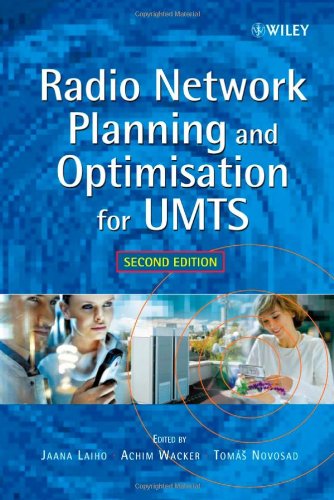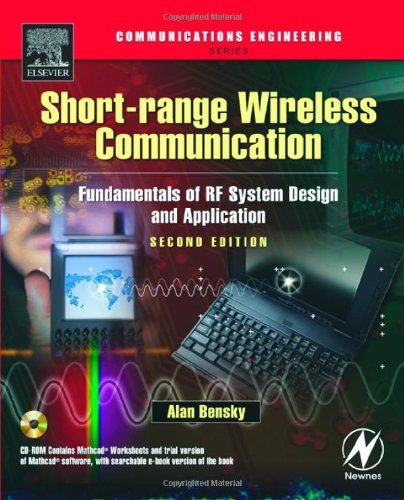Tarmo Anttalainen9781580535007, 1580535003
Table of contents :
Introduction to Telecommunications
Network Engineering……Page 5
Copyright……Page 6
Contents……Page 7
Preface……Page 17
Acknowledgments……Page 21
1.2 Significance of Telecommunications……Page 23
1.3 Historical Perspective……Page 25
1.4 Standardization……Page 29
1.5 Standards Organizations……Page 31
1.5.1 Interested Parties……Page 32
1.5.3 European Organizations……Page 33
1.5.4 American Organizations……Page 34
1.5.5 Global Organizations……Page 35
1.5.6 Other Organizations……Page 36
1.6 Development of the Telecommunications Business……Page 37
1.7 Problems and Review Questions……Page 39
2.1 Basic Telecommunications Network……Page 41
2.1.2 Switching……Page 42
2.1.3 Signaling……Page 43
2.2.1 Microphone……Page 44
2.2.3 Signaling Functions……Page 45
2.3.1 Setup and Release of a Call……Page 46
2.3.2 Rotary Dialing……Page 47
2.3.3 Tone Dialing……Page 48
2.3.4 Local Loop and 2W/ 4W Circuits……Page 50
2.5 Telephone Numbering……Page 52
2.5.2 Country Code……Page 53
2.5.5 Operator Numbers……Page 54
2.6.1 Telephone Exchange……Page 55
2.6.2 Signaling……Page 56
2.6.3 Switching Hierarchy……Page 59
2.6.4 Telephone Call Routing……Page 60
2.7 Local- Access Network……Page 63
2.7.1 Local Exchange……Page 64
2.7.2 Distribution Frames……Page 65
2.8 Trunk Network……Page 67
2.9 International Network……Page 68
2.10.1 Public Networks……Page 69
2.10.2 Private or Dedicated Networks……Page 73
2.10.3 Virtual Private Networks……Page 74
2.10.4 INs……Page 75
2.10.5 Public Switched Telecommunications Network Today……Page 78
2.11 Network Management……Page 80
2.11.2 Who Manages Networks?……Page 81
2.11.3 DCN……Page 83
2.11.4 TMN……Page 84
2.12.1 Grade of Service……Page 87
2.12.2 Busy Hour……Page 88
2.12.4 Probability of Blocking……Page 89
2.13 Problems and Review Questions……Page 94
3.1 Types of Information and Their Requirements……Page 99
3.2 Simplex, Half- Duplex, and Full- Duplex Communication……Page 102
3.3 Frequency and Bandwidth……Page 103
3.3.1 Frequency……Page 104
3.3.2 Bandwidth……Page 105
3.4.1 Analog and Digital Signals……Page 107
3.4.2 Advantages of Digital Technology……Page 108
3.4.3 Examples of Messages……Page 110
3.5 Analog Signals over Digital Networks……Page 113
3.6.1 Sampling……Page 114
3.6.2 Quantizing……Page 118
3.6.3 Quantizing Noise……Page 119
3.6.4 Nonuniform Quantizing……Page 121
3.6.5 Companding Algorithms and Performance……Page 123
3.6.6 Binary Coding……Page 125
3.6.7 PCM Encoder and Decoder……Page 127
3.7 Other Speech- Coding Methods……Page 128
3.7.2 Differential PCM ( DPCM)……Page 130
3.7.3 DM……Page 131
3.7.4 Adaptive DPCM ( ADPCM)……Page 132
3.7.5 Speech Coding of GSM……Page 134
3.7.6 Summary of Speech- Coding Methods……Page 135
3.8.1 Decibel, Gain, and Loss……Page 137
3.8.2 Power Levels……Page 138
3.8.3 Digital Milliwatt……Page 140
3.9 Problems and Review Questions……Page 141
4.1.1 Elements of a Transmission System……Page 147
4.1.2 Signals and Spectra……Page 149
4.2.2 AM……Page 151
4.2.3 FM……Page 155
4.2.4 PM……Page 157
4.2.5 Allocation of the Electromagnetic Spectrum……Page 160
4.2.6 Free- Space Loss of Radio Waves……Page 163
4.2.7 Antennas……Page 165
4.3.1 Symbol Rate ( Baud Rate) and Bandwidth……Page 166
4.3.2 Symbol Rate and Bit Rate……Page 168
4.3.3 Maximum Capacity of a Transmission Channel……Page 170
4.4 Coding……Page 173
4.4.1 Purpose of Line Coding……Page 174
4.4.2 Spectrum of Common Line Codes……Page 175
4.5 Regeneration……Page 177
4.6.1 Frequency- Division Multiplexing ( FDM) and TDM……Page 180
4.6.2 PCM Frame Structure……Page 181
4.6.3 Plesiochronous Transmission Hierarchy……Page 186
4.6.4 SDH and SONET……Page 188
4.7.1 Copper Cables……Page 192
4.7.2 Optical Fiber Cables……Page 194
4.7.4 Satellite Transmission……Page 197
4.8 Transmission Equipment in the Network……Page 198
4.8.3 Add/ Drop Multiplexers……Page 199
4.8.6 Optical Line Systems……Page 200
4.8.7 WDM……Page 201
4.8.8 Optical Amplifiers……Page 203
4.8.9 Microwave Relay Systems……Page 204
4.9 Problems and Review Questions……Page 205
5 Mobile Communications……Page 211
5.1 Cellular Radio Principles……Page 212
5.2.1 Cellular Structure……Page 213
5.2.2 HLR and VLR……Page 214
5.2.3 Radio Channels……Page 215
5.3.1 MS in Idle Mode……Page 216
5.3.2 Outgoing Call……Page 217
5.3.5 MS Transmitting Power……Page 218
5.4.1 Cordless Telephones……Page 219
5.4.2 Professional or Private Mobile Radio ( PMR)……Page 220
5.4.3 Radio Paging……Page 224
5.4.5 Digital Second Generation Cellular Systems……Page 225
5.4.6 Third Generation Cellular Systems……Page 230
5.4.7 Mobile Satellite Systems……Page 231
5.4.8 WLANs……Page 232
5.4.9 Bluetooth……Page 233
5.5.1 Structure of the GSM Network……Page 234
5.5.2 Physical Channels……Page 239
5.5.3 Logical Channels……Page 240
5.6.1 Location Update……Page 241
5.6.2 Mobile Call……Page 243
5.6.3 Handover or Handoff……Page 245
5.6.4 GSM Security Functions……Page 247
5.6.5 GSM Enhanced Data Services……Page 249
5.7 GPRS……Page 250
5.7.1 GPRS Network Structure……Page 251
5.7.2 GPRS Network Elements……Page 252
5.7.3 Operation of GPRS……Page 254
5.8 Problems and Review Questions……Page 255
6.1 Principles of Data Communications……Page 259
6.1.2 Serial and Parallel Data Communications……Page 260
6.1.3 Asynchronous and Synchronous Data Transmission……Page 261
6.2 Circuit and Packet Switching……Page 264
6.2.2 Packet Switching……Page 265
6.2.4 Switching and Routing Through Virtual Circuits……Page 267
6.2.5 Polling……Page 268
6.3.1 Protocol Hierarchies……Page 270
6.3.2 Purpose and Value of Layering……Page 272
6.3.3 Open Systems Interconnection ( OSI)……Page 273
6.3.5 Data Flow Through a Protocol Stack……Page 282
6.4.1 Voice- Band Modems……Page 284
6.4.2 ISDN……Page 290
6.4.3 DSL……Page 291
6.4.4 Cable TV Networks……Page 299
6.4.5 Wireless Access……Page 301
6.4.7 Leased Lines and WANs……Page 302
6.5 LANs……Page 303
6.5.1 LAN Technologies and Network Topologies……Page 304
6.5.3 CSMA/ CD Network Structure……Page 306
6.5.4 Frame Structure of the Ethernet……Page 307
6.5.5 CSMA/ CD Collision Detection……Page 310
6.5.6 Twisted- Pair Ethernet……Page 314
6.5.7 Switched Ethernet Switches and Bridges……Page 316
6.5.8 Fast Ethernet……Page 318
6.5.9 Autonegotiation……Page 319
6.5.10 Gigabit Ethernet……Page 320
6.5.11 Upgrade Path of the Ethernet Network……Page 321
6.5.12 Virtual LAN……Page 322
6.6.1 Development of the Internet……Page 323
6.6.2 Protocols Used in the Internet……Page 324
6.6.3 Bearer Network Protocols for IP……Page 327
6.6.4 Internet Protocol……Page 328
6.6.5 Address Resolution Protocol……Page 337
6.6.6 Routing Protocols……Page 338
6.6.7 ICMP……Page 339
6.6.8 Structure of Internet and IP Routing……Page 340
6.6.9 Host- to- Host Protocols……Page 341
6.6.10 Application Layer Protocols……Page 349
6.6.11 WWW……Page 353
6.6.12 Voice over IP ( VoIP)……Page 359
6.6.13 Summary……Page 363
6.8 ATM……Page 364
6.8.1 Protocol Layers of ATM……Page 365
6.8.2 Cell Structure of ATM……Page 366
6.8.3 Physical Layer of ATM……Page 368
6.8.4 Switching of ATM Cells……Page 369
6.8.5 Service Classes and Adaptation Layer……Page 370
6.9 Problems and Review Questions……Page 372
7.1 Information Networks……Page 379
7.3 Wireless Communications……Page 380
7.5 Digital Broadcast Systems……Page 381
7.6 Summary……Page 382
About the Author……Page 383
Index……Page 385







Reviews
There are no reviews yet.